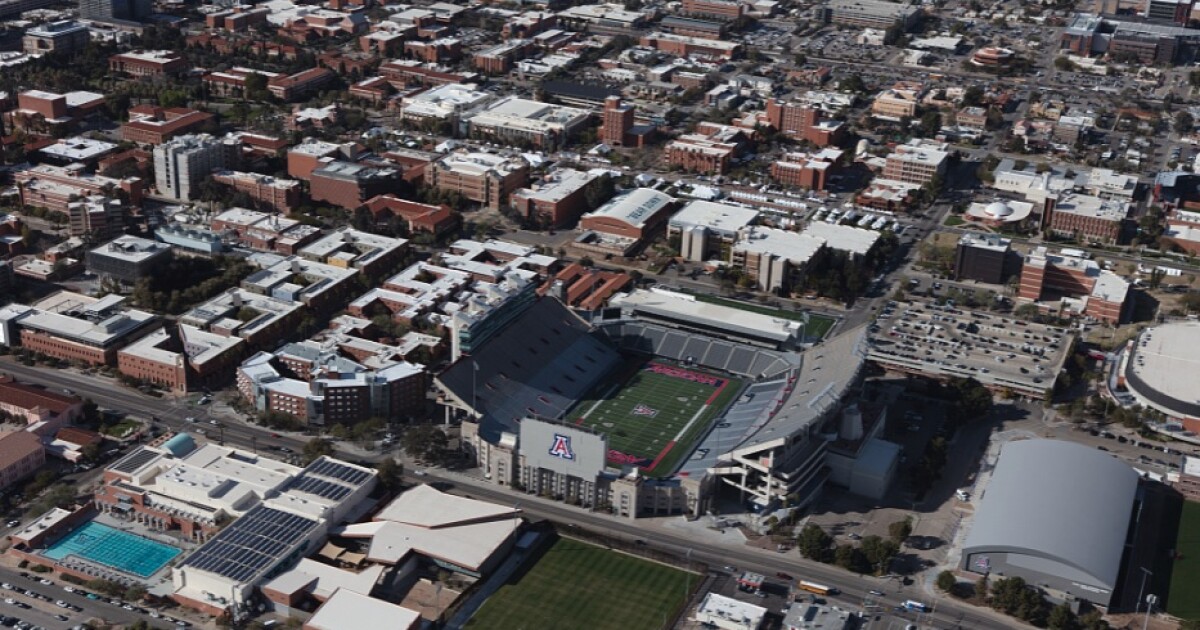Study: Groundwater pumping affecting Basin Aquifer water levels more than climate change – KJZZ

Report on Groundwater Depletion in the Tucson Basin Aquifer and Implications for Sustainable Development Goals
Executive Summary
A recent study on the Tucson Basin Aquifer reveals that groundwater pumping by humans has caused a more significant decline in water levels over the past 70 years than natural climate variations over the last 30,000 years. The rate of depletion far exceeds natural recharge capacities, posing a direct threat to the achievement of several United Nations Sustainable Development Goals (SDGs), most notably SDG 6 (Clean Water and Sanitation) and SDG 11 (Sustainable Cities and Communities). This report outlines the study’s findings and analyzes their direct relevance to sustainable resource management frameworks.
Key Findings of the Study
The research provides a historical context for the current state of the aquifer, highlighting the unprecedented impact of human activity.
- Historical Recharge Consistency: Over the last 30,000 years, groundwater recharge in the basin has remained relatively consistent.
- Natural Fluctuation: Since the end of the last ice age, natural dry periods caused water tables to drop by a maximum of 105 feet.
- Anthropogenic Impact: In the last 70 years alone, groundwater pumping has resulted in a water table drop twice that of the most severe natural dry periods.
- Unsustainable Withdrawal Rate: Current extraction rates are so high that they surpass the aquifer’s ability to be replenished, even under the wettest climate conditions observed in the geological record. As stated by study author Jennifer McIntosh, “humans are extracting more groundwater out of the Tucson Basin Aquifer than would be naturally recharged.”
Relevance to Sustainable Development Goals (SDGs)
The study’s conclusions have significant implications for regional sustainability and underscore challenges in meeting global development targets.
- SDG 6: Clean Water and Sanitation: The findings directly challenge the objective of Target 6.4, which aims to “substantially increase water-use efficiency across all sectors and ensure sustainable withdrawals and supply of freshwater to address water scarcity.” The current depletion rate represents a fundamentally unsustainable withdrawal practice that jeopardizes long-term water security for the region.
- SDG 11: Sustainable Cities and Communities: The long-term viability of the Tucson metropolitan area is intrinsically linked to the health of its primary water source. The depletion of the aquifer threatens the resilience and sustainability of the urban environment, conflicting with the core principles of SDG 11, which seeks to make cities inclusive, safe, resilient, and sustainable.
- SDG 13: Climate Action: While the study identifies pumping as a more immediate driver of water loss than climate change, it provides a critical baseline for developing climate adaptation strategies (Target 13.1). Understanding the primary stressor on the water system is essential for building resilience against the compounding effects of future climate variability.
- SDG 15: Life on Land: The lowering of the water table has direct consequences for terrestrial and freshwater ecosystems that depend on groundwater, impacting the conservation and sustainable use of these resources as outlined in SDG 15.
Conclusion
The research provides definitive evidence that anthropogenic activity is the primary driver of water depletion in the Tucson Basin Aquifer. This information is critical for resource managers to formulate and implement water management policies that are in alignment with the Sustainable Development Goals. Achieving long-term water security and urban sustainability in the region necessitates immediate action to manage groundwater extraction rates sustainably.
Analysis of SDGs in the Article
1. Which SDGs are addressed or connected to the issues highlighted in the article?
-
SDG 6: Clean Water and Sanitation
- The article’s central theme is the management and depletion of a freshwater resource, the Tucson Basin Aquifer. It directly addresses the challenges of water availability and sustainable management, which are core to SDG 6.
-
SDG 11: Sustainable Cities and Communities
- The issue is located in the “Tucson Basin,” an urban and populated area. The sustainable management of essential resources like water is critical for the long-term viability and resilience of cities and human settlements. The article highlights a threat to the region’s sustainability.
-
SDG 12: Responsible Consumption and Production
- The article explicitly states that “groundwater pumping” by people is the primary cause of the aquifer’s depletion. This points directly to unsustainable consumption patterns of a natural resource, which is a key concern of SDG 12.
2. What specific targets under those SDGs can be identified based on the article’s content?
-
Target 6.4: By 2030, substantially increase water-use efficiency across all sectors and ensure sustainable withdrawals and supply of freshwater to address water scarcity.
- The article highlights the failure to achieve sustainable withdrawals by stating, “people are depleting water faster than even the wettest periods observed could restore the aquifer.” This directly relates to the need for sustainable freshwater management as outlined in Target 6.4.
-
Target 11.5: By 2030, significantly reduce the number of deaths and the number of people affected and substantially decrease the direct economic losses relative to global gross domestic product caused by disasters, including water-related disasters.
- Severe groundwater depletion is a slow-moving, water-related disaster that can lead to water scarcity and land subsidence. The study’s aim to “provide critical information to resource managers” is a step towards mitigating the risks associated with this potential disaster, aligning with the preventative focus of Target 11.5.
-
Target 12.2: By 2030, achieve the sustainable management and efficient use of natural resources.
- The article’s entire focus is on the unsustainable use of a natural resource (groundwater). The finding that human extraction outpaces natural recharge demonstrates a clear lack of sustainable management, making Target 12.2 highly relevant.
3. Are there any indicators mentioned or implied in the article that can be used to measure progress towards the identified targets?
-
Indicator 6.4.2: Level of water stress: freshwater withdrawal as a proportion of available freshwater resources.
- This indicator is strongly implied. The article quantifies the impact of withdrawals by noting the water table has dropped significantly more in the last 70 years from depletion than it did during natural dry periods over millennia. The statement that “humans are extracting more groundwater… than would be naturally recharged” is a direct description of high water stress.
-
Indicator 11.b.2: Proportion of local governments that adopt and implement local disaster risk reduction strategies.
- While the article does not mention an existing strategy, it implies the need for one. The study’s purpose is to provide “critical information to resource managers in the basin area,” which is a foundational component for developing and implementing data-driven water management and disaster risk reduction plans.
-
Indicator 12.2.1: Material footprint, material footprint per capita, and material footprint per GDP.
- The article implicitly discusses the “material footprint” of water. The act of “groundwater pumping” and the resulting depletion are measures of water consumption. The drop in the water table—”as much as 105-feet during dry periods” versus a drop more than double that “in the last 70 years”—serves as a physical measurement of this footprint.
4. Summary Table
| SDGs | Targets | Indicators |
|---|---|---|
| SDG 6: Clean Water and Sanitation | 6.4: Ensure sustainable withdrawals and supply of freshwater to address water scarcity. | 6.4.2 (Implied): Level of water stress, evidenced by the fact that human extraction of groundwater exceeds the natural recharge rate of the aquifer. |
| SDG 11: Sustainable Cities and Communities | 11.5: Significantly reduce the number of people affected by water-related disasters. | 11.b.2 (Implied): The need for local disaster risk reduction strategies is highlighted by providing “critical information to resource managers” to mitigate the slow-moving disaster of aquifer depletion. |
| SDG 12: Responsible Consumption and Production | 12.2: Achieve the sustainable management and efficient use of natural resources. | 12.2.1 (Implied): The material footprint of water is measured by the rate of “groundwater pumping” and the resulting drop in the water table, which is described as unsustainable. |
Source: kjzz.org
What is Your Reaction?
 Like
0
Like
0
 Dislike
0
Dislike
0
 Love
0
Love
0
 Funny
0
Funny
0
 Angry
0
Angry
0
 Sad
0
Sad
0
 Wow
0
Wow
0















































/environment-climate-change-and-health-(ech)/water-sanitation-hygiene-and-health-(wsh)/landfill-tuvalu-36092.tmb-1200v.jpg?sfvrsn=5c21fe40_1#)


.jpg.webp?itok=0ZsAnae9#)























